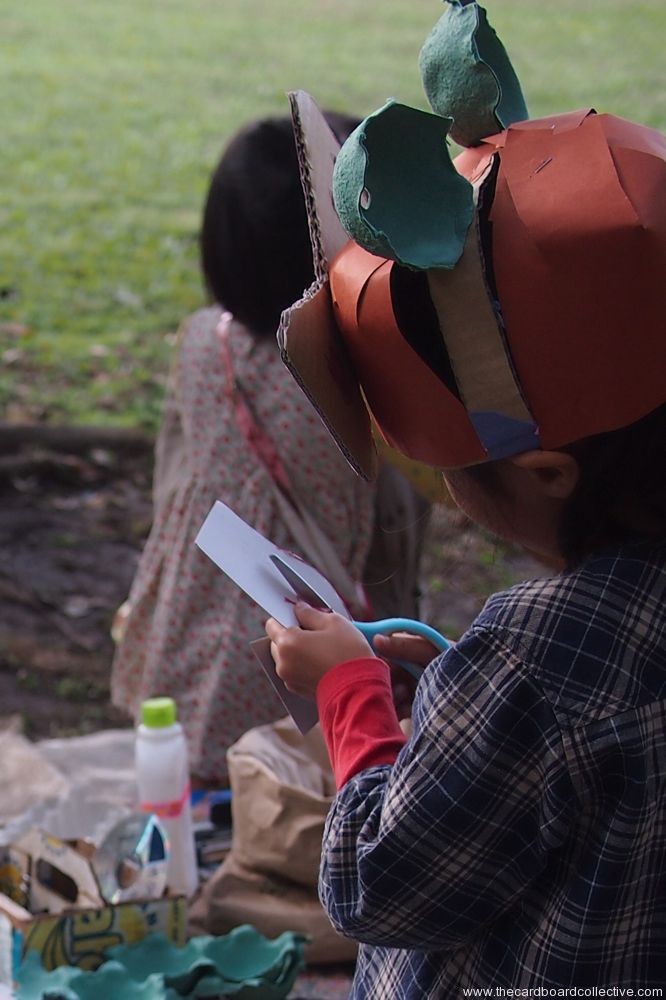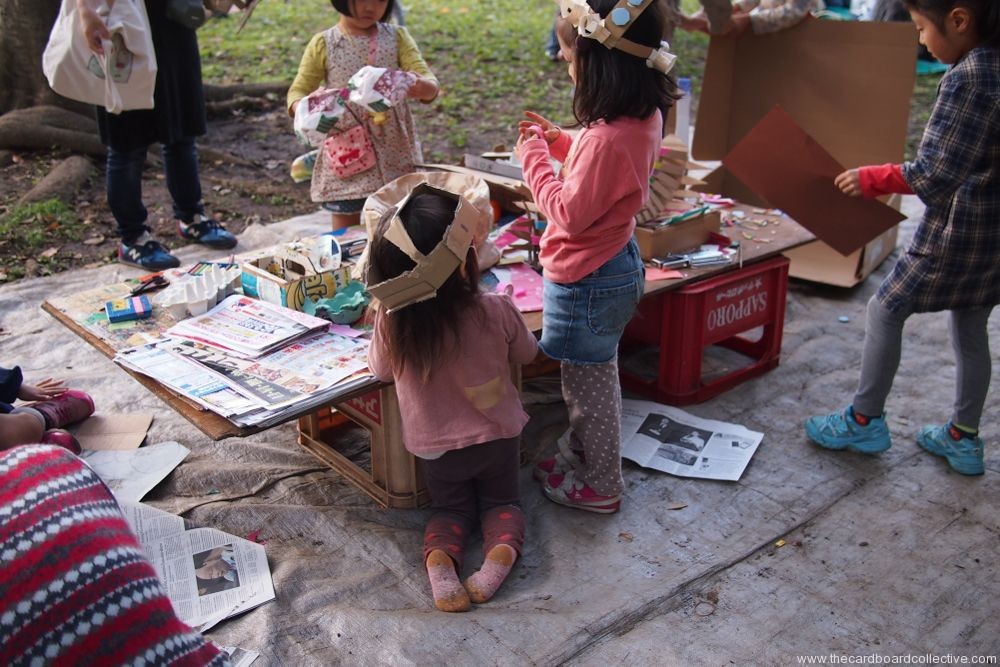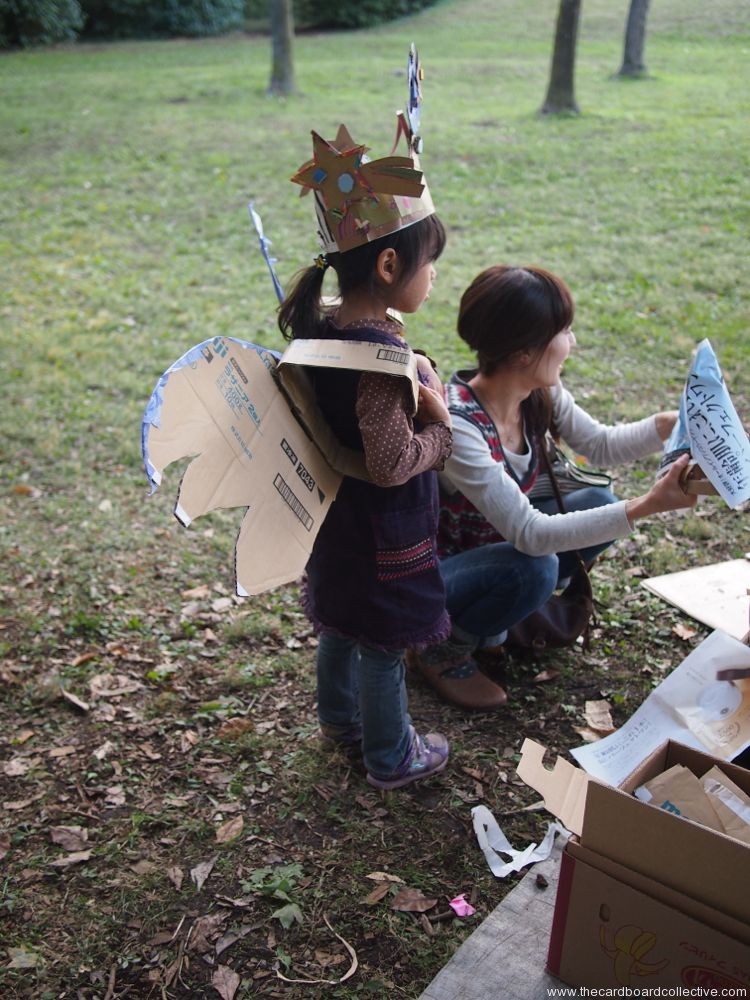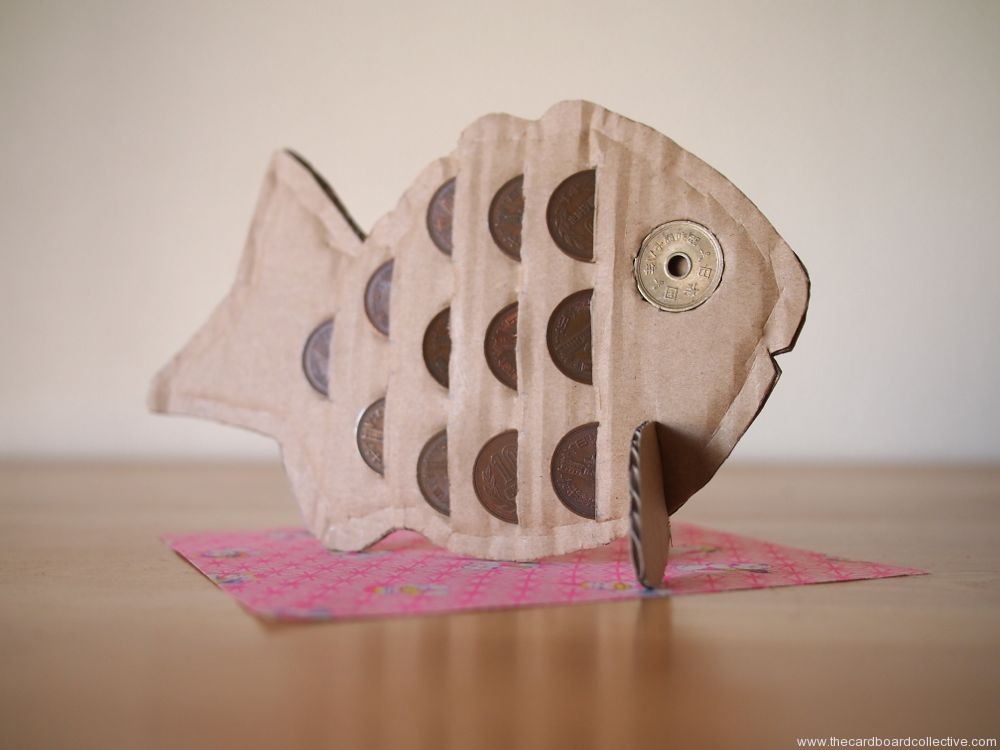 (Cardboard Pull Toy at 0123 Harappa)
(Cardboard Pull Toy at 0123 Harappa)
After a week of sewing my heart out for the Elsie Marley blog KCWC (Kids Clothing Week Challenge) I'm ready for a break and the opportunity to get back to my cardboard projects. I had a great time sewing and even had a blouse that I made for Electra featured on Elsie Marley's Blog. It was a great opportunity to engage in a Sew Along, and I'm hoping we can do something similar here on The Cardboard Collective someday (of course with cardboard).
Today I took the girls to a favorite public indoor play place in Tokyo called 0123 Harappa. Harappa is a place for kids aged 0-3 and their parents to play with developmentally appropriate toys, socialize with other children and parents, and basically have fun.
Harappa has lots of activities for kids including a library area, an art area with clay, paper, crayons and glue, an are just for small babies who are not crawling yet, a house and dress up area, an open area for ride on toys, blocks, slides, small climbing gyms and so much more.
I wanted you to see some of the great ways that the staff at Harappa uses cardboard. They have made some incredible creations, and they're always changing! Here are a few of the things that they've made that I hope will inspire those with young children.

I've got to find out how they are cutting Japanese cardboard letters with such precision!

Peek-a-boo Wall murals. Hand painted cardboard.


Animal ball toss. They've put a rounded piece of cardboard inside so the ball rolls back to you quickly and easily.



My favorite. An amazing "Where Do These Animals Live?" wall puzzle (The pieces are magnetized and everything is hand painted.)

Cardboard Cylinder Walls for hiding small objects in. I didn't see too many kids playing with this, but I know if we had one of these in our home the girls would absolutely love it.

Even this adorable cardboard lion memo pad and pencil holder!
You can see why we love this place.











































































































